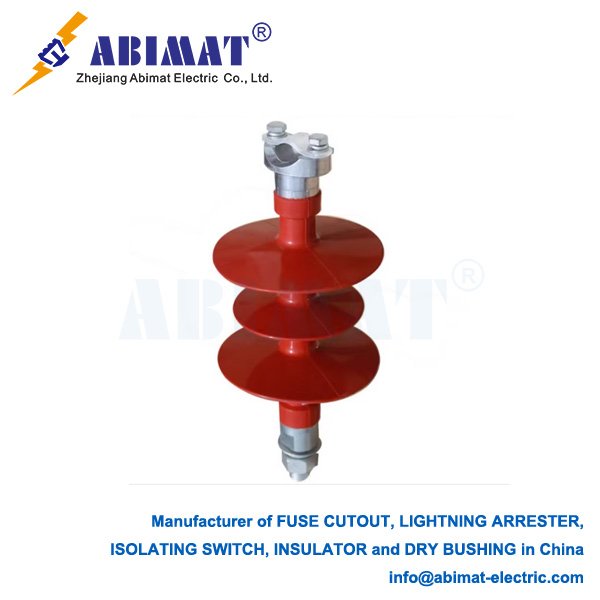Polymer Dead-End Insulators: Modern Strength and Reliability for Power Lines
A polymer dead-end insulator is an important part of electrical distribution and transmission networks. It has two main jobs: giving mechanical support and providing electrical insulation. It gets used where a power line ends or turns sharply. It’s different from suspension insulators—those hang freely. A dead-end insulator has to hold the full mechanical tension of the conductor. And it still needs to keep its insulating ability.
These insulators have a strong structure. It’s made of three main parts. The first part is the core. This part carries the load. It’s usually a rigid fiberglass rod (FRP). This rod has very high tensile strength. It takes the mechanical load from the conductor.
The second part is the housing and sheds. The fiberglass core is covered by a housing. It also has sheds—those are the umbrella-like parts sticking out. Both the housing and sheds are made of polymer material. The most common ones are ethylene propylene diene monomer (EPDM) or silicone rubber (SIR). These sheds are important. They give the necessary creepage distance. This distance stops flashover from happening.
The third part is the end fittings. These are metal parts. They’re often made of forged iron or malleable iron. They get attached to both ends of the core. These fittings have special designs. Some have clevis, ball, or tongue shapes. These shapes let the insulator connect to the supporting structure and the conductor.
Polymer dead-end insulators have big advantages. That’s why they’re used so widely now—way more than traditional porcelain ones. First, they’re lightweight. They’re much lighter than porcelain insulators of the same type. This makes moving them, handling them, and installing them easier. It also makes these jobs faster and safer.

Second, they’re good at resisting vandalism and impacts. The polymer housing is very tough. It doesn’t shatter. It can stand damage from gunshots or things people throw. This is a big plus in many areas.
Third, their surface repels water. Polymer materials—especially silicone rubber—do this naturally. This stops a continuous water film from forming on the surface. This helps the insulator work better when it’s wet, in polluted areas, or near the coast. It also reduces leakage currents.
Fourth, they work better in dirty conditions. They have two things helping here: the water-repellent surface and a longer, more effective creepage path. These two things let the insulators keep working well in places with industrial pollution or salt pollution. So people don’t need to clean them as often.
Polymer dead-end insulators get used in many tough situations. One situation is when overhead lines end on poles or transmission towers—they’re used there. Another is when lines need to be anchored at angle points or corners. They also give strain support where underground lines connect to overhead lines.
These insulators are very durable, but they have one weak point. Their polymer housing can age slowly over time. This happens because of ultraviolet radiation and electrical activity. Good manufacturers fix this problem. They add fillers like alumina trihydrate (ATH) to the polymer mix. This makes the insulator better at resisting tracking and erosion.
The abimat polymer dead-end insulator is a big step forward in overhead line hardware technology. It has three good qualities together: high mechanical strength, great electrical insulation, and strong performance in different environments. It gives a reliable, cost-effective, and long-lasting solution. This solution helps secure and insulate electrical conductors when they’re under tension.


